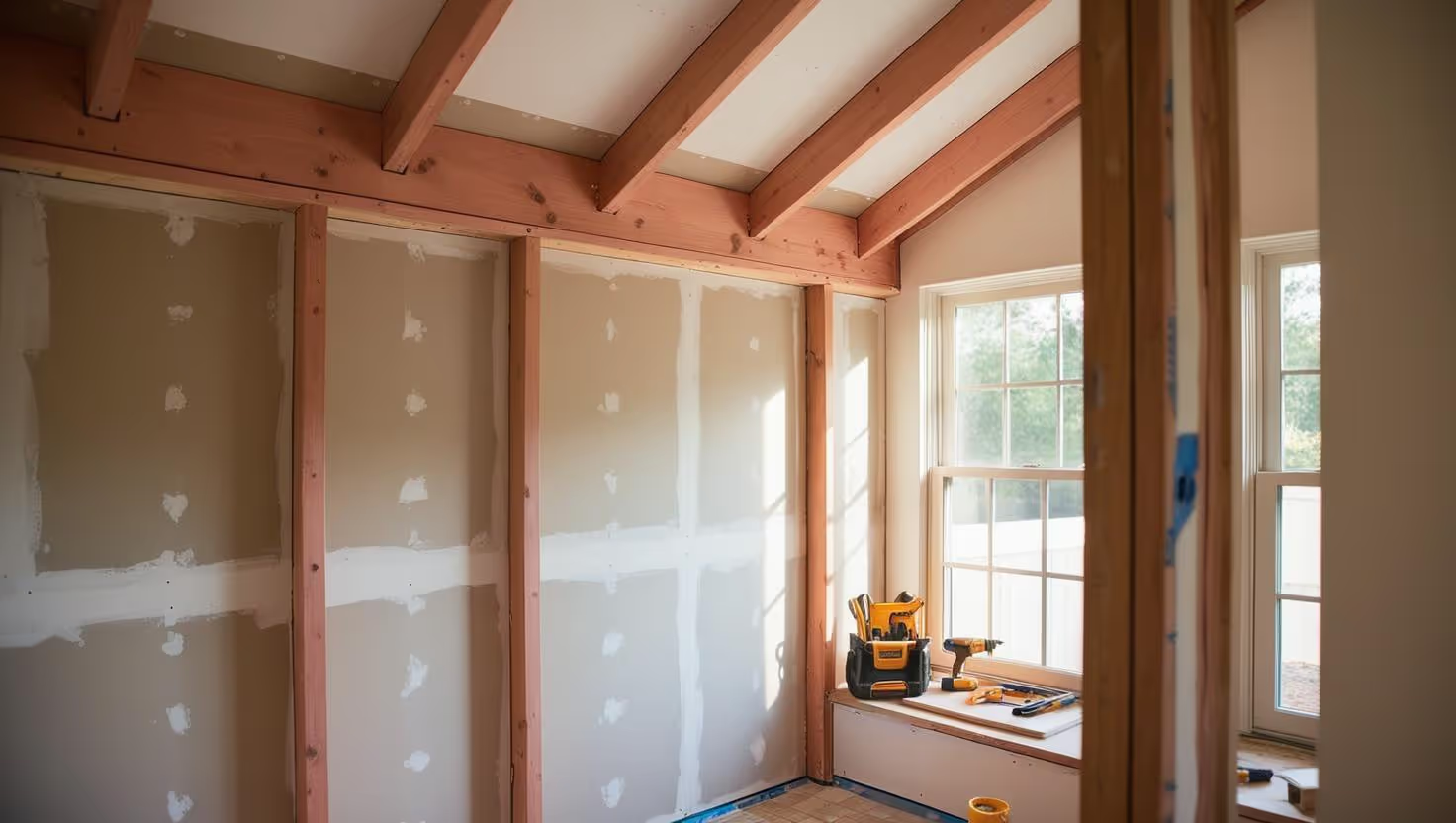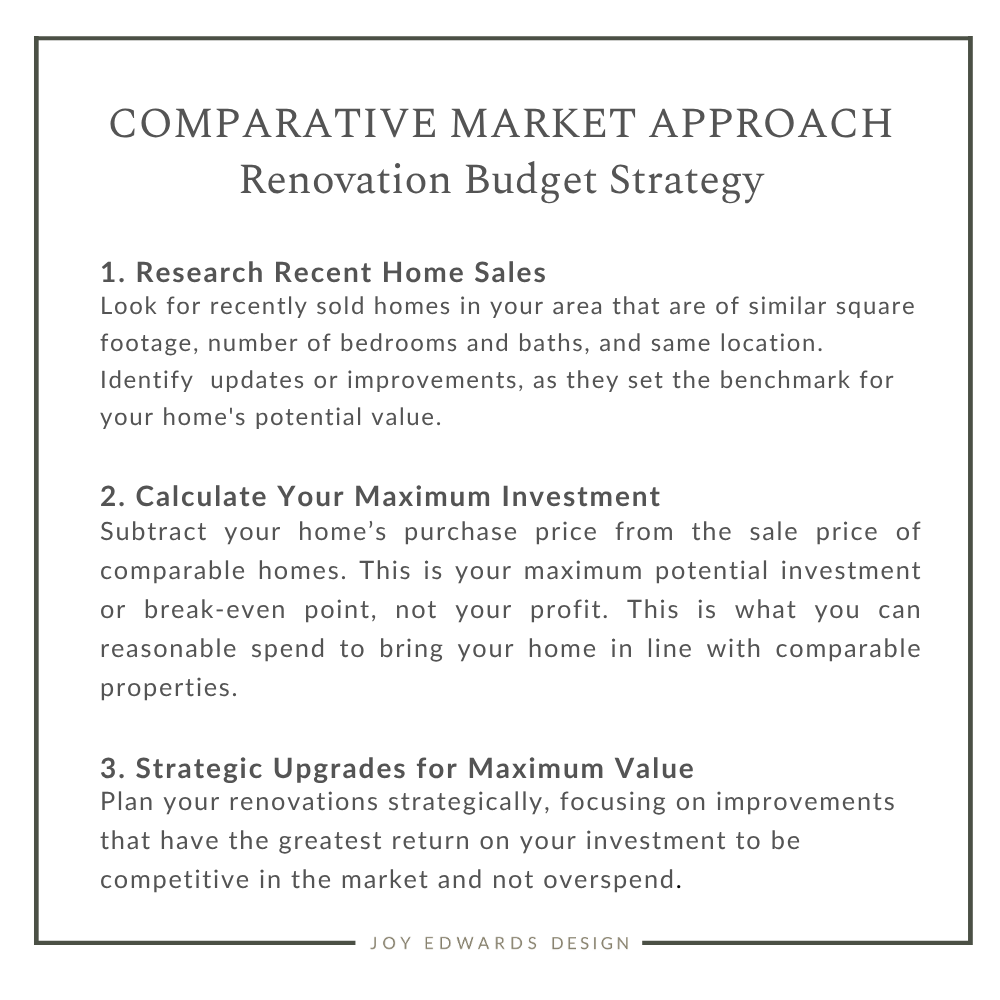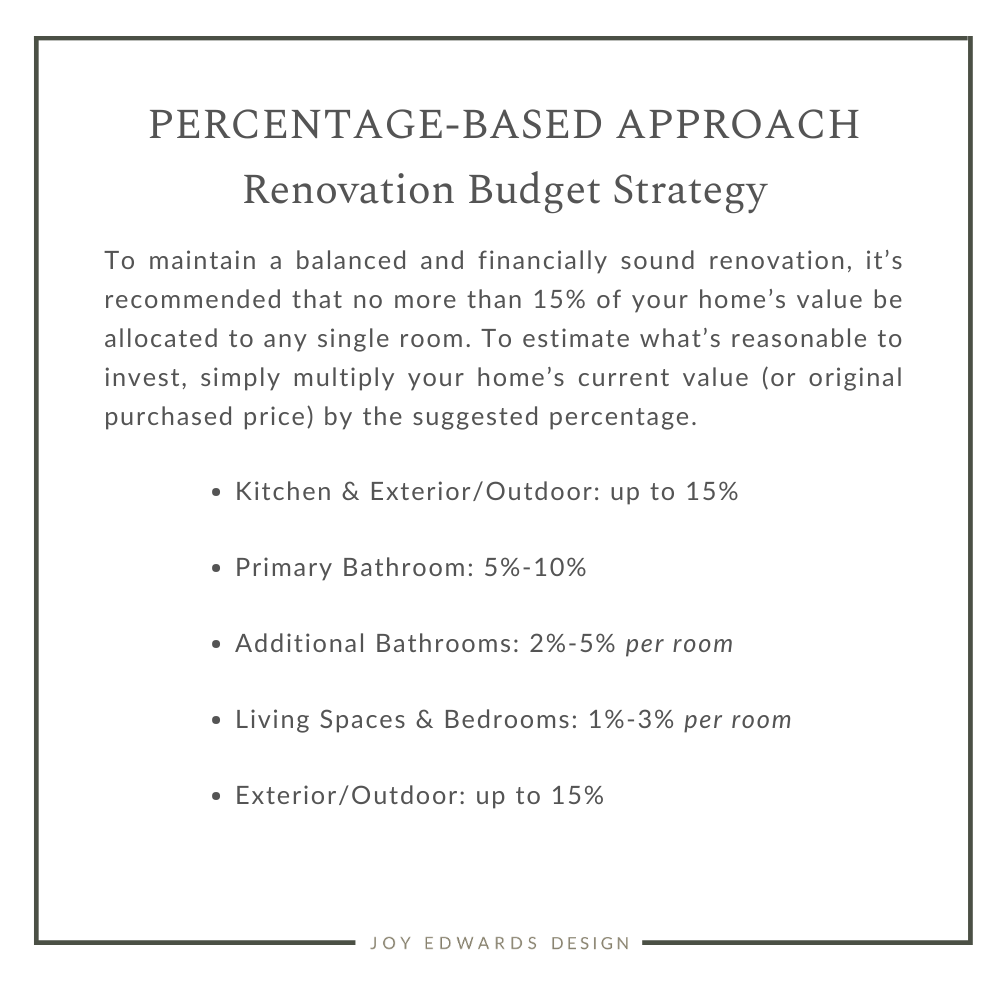
Transforming your home is an exciting opportunity to express your personality and enhance your home’s value. To make the most of this experience, it’s essential to establish a solid foundation with a well-defined budget strategy. A renovation budget strategy is a structured approach to planning and allocating funds for a home renovation project. It helps homeowners make informed decisions by aligning their design goals with their financial boundaries, ensuring they invest wisely without overspending.
Creating a budget strategy is an important step to take at the beginning of your home renovation journey. During this early stage, the process often feels vague or overwhelming; however, a clear strategy for your budget brings clarity, direction, and structure.
When embarking on a project, it’s important to acknowledge that the final investment will not materialize all at once. Therefore, an initial budget should be both flexible and realistic, allowing it to evolve alongside the project. While early estimates serve as helpful benchmarks, the final investment will only become clear as the project progresses.
Every renovation comes with its own set of complexities, and several details must be confirmed before a clear investment for your project can be established. Shifts in scope and budget are often inevitable until key decisions are finalized. Knowing when those decisions typically occur and planning contingency funds accordingly ensures you’re financially prepared for adjustments along the way. This level of foresight is essential for keeping your project on track and setting yourself up for a successful outcome.
No two renovation projects are exactly alike, but there are key milestones you can rely on to guide the process from concept to completion. Understanding when these milestones occur and how they impact your budget can help you plan more confidently and avoid unexpected expenses.
When you hire an interior designer to begin your project, your home renovation will go through four essential budgeting stages. These moments mark when critical decisions are made and where adjustments often happen:
If you begin your project with a contractor, the design process will look very different. Your budget and allowances will typically be established before any finishes are selected. However, these allowances are simply estimates of what you could spend—not necessarily what you will spend. Once you begin selecting actual materials and fixtures, it’s common for costs to exceed the original estimates if the allowances weren’t aligned with your quality expectations or design vision.
Rather than viewing your initial renovation budget as a final number, think of it as a working estimate that evolves alongside your project. As your designer and contractor guide you through each milestone, they’ll help you stay within a realistic range, but it’s normal for some adjustments to occur along the way.
Creating a contingency budget strategy ensures you're prepared for unexpected costs and allows you to adjust your budget with confidence. It’s important to establish a contingency plan from the very beginning. Think of it as a smart, protective buffer that helps you estimate more realistically and avoid surprises when receiving quotes or when unforeseen issues arise during the project.
Contingency Planning Guidelines for Project Planning:
- For complex or high-risk projects: Start with a 25% contingency
- For projects still in early planning: Add 15%–20%
- For active renovations with most decisions made: A 5%–10% contingency is often sufficient.
Including a contingency upfront helps you manage uncertainty so you’re never caught off guard when things don't go exactly as planned. It’s a proactive step that keeps your renovation budget realistic and your investment strategy firmly in your control.
Now that you understand the four critical budget milestones in a renovation project and have a contingency percentage in mind, it’s time to explore two proven strategies for estimating your renovation budget. Both approaches align your investment with the value of your home, ensuring you’re spending wisely.
The first strategy takes a market-based approach, using your home’s value and neighborhood comparables to guide your investment. The second uses a percentage-based approach, allocating a set portion of your home’s value toward the renovation. Each strategy provides a helpful framework tailored to your goals and comfort level.
A smart renovation budget should align with your home’s overall value. Your home is an investment, and any renovation should enhance that investment, not compromise it. To help you strike the right balance, there are two key strategies you can use to calculate a reasonable renovation budget. Once you've discovered what that is, the goal is to stay within a range that makes sense for your property value, ensuring a valuable return on your investment.
If you plan to sell your home within the next five years, your renovation strategy should be guided by a comparative market analysis. Overspending on high-end finishes in a neighborhood with modest resale values can make it difficult to recover your investment. Similarly, choosing bold, highly personalized, or trend-driven finishes may limit your home’s appeal to future buyers.
In this case, the most effective strategy is to focus on timeless, budget-conscious selections that have broad market appeal. This approach enables you to make informed, financially sound decisions based on real estate data and local market trends.
When using a comparative market approach, it’s important to prioritize the areas of your home that offer the highest return on investment. A well-executed kitchen and bathroom renovation not only enhances daily living but also appeals to future buyers. Basement renovations, home additions, and exterior improvements are also smart investments.
Here are guidelines using the comparative market approach.

If you plan to remain in your home for many years, the percentage-based approach can be a helpful framework for determining a reasonable renovation investment. This method offers practical guidelines by estimating how much to spend on each room based on a percentage of your home’s current market value or original purchase price.
The percentage-based approach helps answer one of the most important questions homeowners face: “What is a reasonable amount to spend on a kitchen or bathroom renovation?” This method provides a clear benchmark by suggesting a maximum investment based on your home’s value. From there, you can decide whether that amount aligns with your goals or adjust it to reflect your personal priorities, lifestyle, and comfort level.

Evaluating a market-based or percentage-based approach as the first step in your renovation budget strategy will provide a clearer understanding of what’s realistic for your home, your goals, and your investment. Whether you’re planning to sell in the future or settle into your forever home, a thoughtful budget strategy allows you to make confident, informed decisions.
At the end of the day, your renovation should feel like a smart step forward, one that improves your everyday experience and adds lasting value to your home.
Planning to include furnishings in your renovation? Be sure to read our article Smart Budget Planning for Furnishing Your Northern Virginia Home for expert tips on creating a well-rounded strategy.
Ready to work with an interior designer who helps with renovation budgets while valuing thoughtful, intentional design? Contact Joy Edwards Design to schedule a Discovery Call. We’d love to bring your vision to life with clarity and confidence.